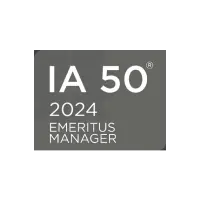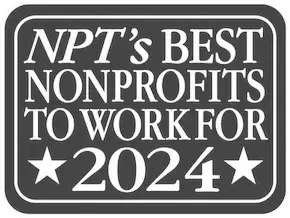How We Updated Our Credit Guidelines to Support Developers of Color
By Masouda Omar, Head of Small Business & Community Development Credit – Lending Operation
As a Community Development Financial Institution (CDFI), Capital Impact Partners has played a part in both upholding and dismantling systemic racial bias in the credit system.
Since our inception, we have served sectors, industries, and borrowers not served by the traditional financial system.
Like many CDFIs, Capital Impact provides more flexibility than traditional lenders in some key areas like loan-to-value limits and financial covenants that borrowers must meet.
However, our credit guidelines – the policies that guide our loan structures and lending decisions – are built on the traditional approach to credit that has deep roots in a financial system that intentionally excluded people of color for much of its history. Often, our lending team seeks one or several “exceptions” to our credit guidelines to accommodate the diverse needs of our diverse borrowers.
Creating flexible financing is both a mindset and an approach. To do so, we need input from our clients and communities to rethink and reshape our products and requirements. When done correctly, this approach gears us away from the extractive patterns of traditional financing and closer to confirming that when people are given the opportunity to succeed, their communities, local residents, and our country thrive.
We have spent the last several years providing capacity building and support to developers of color across the country. Having seen in our own lending that developers of color were not well represented and hearing the barriers that they face in scaling up to work on more and larger projects, we determined that we needed to take bigger steps to address the need.
How We Are Doing Things Differently
In that light, we spent the better part of 2022 reviewing and revising our lending requirements and processes to be more equitable, to better support developers and borrowers of color from all walks of life in having access to the capital and opportunities they deserve. Additionally, we created the Diversity in Development loan product to provide access to capital that will help developers scale and thrive.
As a part of the Momentus Capital branded family of companies, it also became important for Capital Impact to revise and improve efficiencies in lending approval processes to account for a combined strategy.
Because one of the most important parts of transformation is transparency, we want to share the recent updates to our credit guidelines with our communities, partners, and other stakeholders.

Equitable Development Initiative graduates benefit from training and access to capital.
An Overview of Our New Credit Guidelines
A. Racial Equity Commitment
- Developer Experience
Staying true to our vision, we want to be able to support developers of color who might not have had the opportunity to build and sustain a track record in the markets where they are active.
Old guideline: requirement of three completed and operating projects
New guideline: one completed project and have been in operation for 3+ years
We are committed to looking at the borrower as a whole, taking into account their background including education, work history, participation in the Equitable Development Initiative (EDI) or other capacity building initiatives, as well as any relevant experience with joint venture partners and consultants.
- Developer Equity
We wanted to lighten the load on a borrower to bring a certain amount of cash to each project.
Old guideline: 25 percent equity requirement for predevelopment costs in cases where there is real estate collateral
New guideline: 10 percent equity requirement for predevelopment costs
We have also expanded what we are willing to count towards equity to include subordinate or soft debt, and tax credit equity. Our Diversity in Development loan product further reduces the cash equity requirement to 5 percent for acquisition, predevelopment and construction costs, and increases the loan-to-value threshold as high as 125 percent for acquisition and predevelopment. Up to 3 percent of that equity can come from sources like grants.
This change benefits borrowers by allowing them to preserve their funds and use them toward working capital, growing/expanding their business, hiring staff, etc.
- Guarantee Requirements
Given that most of the borrowers we work with have limited resources, we have eliminated the requirement of a strong guarantor possessing liquid assets and cash flows.
We still expect people who own 20+ percent of a business and are actively engaged in the business to issue guarantees, but we now look at guarantees as an assurance of the borrower’s commitment to the project rather than as a source of repayment.
- Small Multifamily Project Guidelines
We are mindful that not every developer has the expertise and capacity to pursue larger-scope projects with more than 20 units. This, however, should not impede them from having the opportunity to start smaller projects that may be a better fit for their current experience level.
Old guideline: stringent requirements on projects under 20 residential units; did not allow developments with less than 10 units
New guideline: Eliminated requirements on projects under 20 residential units and now allow developments with fewer than 10 units
Smaller unit projects often have higher credit risk because a single vacant unit could jeopardize the project’s ability to make loan payments. However, smaller projects are an important stepping stone for many developers trying to build their portfolios, and we can mitigate the risk with other things like operating reserves and technical assistance.
That being said, we do have minimum loan sizes (now $500,000), but this does not have to impede borrowers from coming to us, as we are actively building a partner network to which we can refer clients in need for smaller loan sizes.
As a developer of color focused on nontraditional projects that create unique opportunities to expand affordable housing, it can be a challenge to secure capital. Capital Impact’s Diversity in Development Loan fills a necessary gap in the marketplace by focusing on mission-based projects that support community needs while also ensuring they can be built in a cost-effective manner.
Mustafa Durrani, Principal at Durrani Development Corporation
B. Streamlining Lending Approval Processes
As a mission-driven organization, it became all the more important for us to improve efficiencies in lending approval processes so as to be able to serve entrepreneurs and their communities seamlessly.
To that end, we have worked on the follow updates:
- Eliminated credit committee approval to be able to issue term sheets to borrowers;
- Reduced the size of our credit committee and streamlined approvals for lower-dollar loans;
- Moved away from issuing commitment letters upon loan approval, and switched to issuing approval letters that are less of a legal document and more of a summary of terms. The reasoning behind this is that we want to avoid putting borrowers in a position where they have to make legal decisions prior to engaging legal counsel, and we also want to streamline our process to close loans more quickly.
Pivoting to Achieve Financial Equity for Our Communities
The changes above are only a starting point. We are committed to adapting to the needs of our borrowers by adding new products and continuing to evolve our credit guidelines in a way that meets the needs of our borrowers. In addition, we are building out a more robust network of technical assistance for our borrowers that ultimately reduces credit risk to both the borrower and the lender. One great example of that is our Equitable Development Initiative (EDI). Through EDI, we aim to provide capacity building in the form of training, mentorship, access to technical assistance, and predevelopment grants (where/when available) to developers of color, so as to enable them to succeed in projects appropriate to their levels of expertise.
We are continuing to think through how we can fold equity into our credit guidelines to transform how capital and investments flow into communities. We are excited to share more about our journey as we grow and evolve to serve communities.






